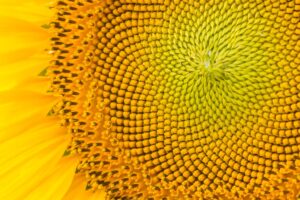Physical Address
304 North Cardinal St.
Dorchester Center, MA 02124
Physical Address
304 North Cardinal St.
Dorchester Center, MA 02124

Have you ever walked through the Smoky Mountains or its foothills (or really any natural setting) and noticed something oddly familiar about how nature arranges itself? I’ve been on the lookout lately for hidden spirals everywhere—from the intricate swirl of a snail’s shell to the arrangement of petals on a flower.
Many natural patterns are closely linked to the Fibonacci sequence—a series in which each number is derived by adding the two previous numbers (for example, 1, 1, 2, 3, 5, 8, 13, 21, 34, and so forth). I am SO not into math (like you have no idea), but I think it’s incredible how these numbers seem to pop up everywhere in nature.

Imagine a gorgeous sunflower. If you look closely at its center, you might notice that the seeds are arranged in spirals that seem almost too perfect to be random. This isn’t just a coincidence—it’s the Fibonacci sequence in action! Such patterns help plants pack seeds efficiently, maximize exposure to the sun, and manage space.
You can see similar designs in pine cones, the arrangement of leaves around a stem, and even in the swirling arms of galaxies. It’s as if nature is following an ancient blueprint.
Try spotting these spirals when hiking or enjoying nature in your garden or neighborhood. It might be how a snail’s shell curves, the way pine needles are arranged on a branch, or even how water swirls as it flows. These naturally-occurring Fibonacci patterns add even more wonder to our surroundings, inviting us to see the hidden order in what might otherwise seem accidental.
These patterns are not only beautiful but practical. The spiral arrangement in sunflowers ensures efficient growth and resource use. This crossover between art and nature and math not only makes our world more visually appealing but also reveals that there’s often an underlying order to nature, even if it’s not immediately obvious.

If you want to learn more about the fascinating world of Fibonacci in nature, Math is Fun is a beginner-friendly website that explains the Fibonacci sequence and explores how these numbers appear in nature.
Watch for these mesmerizing spirals the next time you’re out exploring outside. They’re a welcome reminder that there’s often more than meets the eye—a hidden layer of order and beauty waiting to be discovered. Happy exploring!
The Fibonacci Sequence turns out to be the key to understanding how nature designs… and is… a part of the same ubiquitous music of the spheres that builds harmony into atoms, molecules, crystals, shells, suns and galaxies and makes the Universe sing.
– Guy Murchie, The Seven Mysteries of Life: An Exploration of Science and Philosophy